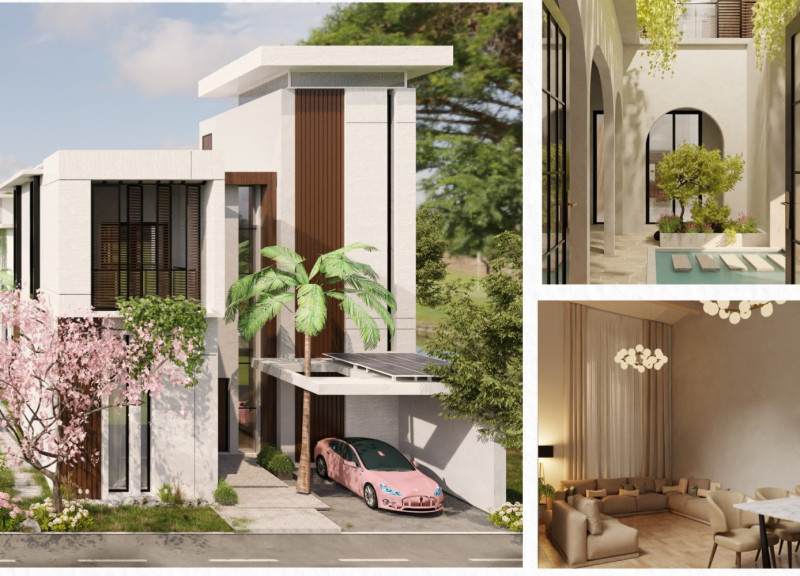5 key facts about this project
This architecture is defined by its purpose-driven design and carefully selected materials that interact harmoniously with the landscape. A comprehensive approach to materiality is apparent; natural materials such as wood, stone, and glass play integral roles in defining the project's aesthetic and structural capabilities. The use of sustainably sourced timber is particularly noteworthy, as it not only reduces the project's carbon footprint but also contributes warmth and texture to the interiors. The stone elements echo the local geology, thereby rooting the design firmly within its geographic context.
The project boasts multiple functional areas, designed to cater to a variety of activities. Open-plan layouts enhance the sense of space, allowing natural light to permeate through generous glazing that invites the outdoors in. This emphasis on light and openness creates a dynamic interplay between internal and external environments. Strategically placed windows offer not only views of the surrounding landscape but also optimize cross-ventilation, promoting natural cooling and reducing reliance on mechanical systems.
Unique design approaches are evident in how the project integrates both architectural form and environmental sustainability. Rooflines and overhangs are designed to mitigate solar gain while enhancing passive heating during colder months. The architecture employs green roofs and living walls, which not only contribute to biodiversity but also aid in stormwater management and insulation. These botanical elements foster a biophilic connection that encourages occupants to engage with nature, enhancing overall well-being.
The thoughtful arrangement of spaces within the design prioritizes user experience. Communal areas are spacious and welcoming, encouraging social interaction, while private spaces such as bedrooms and offices are thoughtfully designed to ensure privacy and comfort. The floor plans are envisioned with flexibility in mind, allowing the interiors to adapt to the evolving needs of occupants over time, which is crucial in contemporary architectural practice.
Beyond its immediate functionality, this project serves as a beacon of architectural ideas that reflect a modern ethos of thoughtful design. The integration of smart technology seamlessly enhances the building’s performance without detracting from its aesthetic appeal. Energy-efficient systems, including solar panels and rainwater harvesting, epitomize a forward-thinking approach that prioritizes sustainability as an integral aspect of its design philosophy.
This architecture is not merely about creating a physical structure but also about fostering connections—between people, between the building and its environment, and between the past and future. The design acts as a facilitator of experiences that enrich the lives of its users while being acutely aware of its ecological responsibilities.
Readers interested in exploring this project further are encouraged to review the architectural plans, architectural sections, and detailed architectural designs that articulate the thoughtful nuances of its development. Through these materials, one can gain deeper insights into the architectural ideas that shaped this project, witnessing how thoughtful design can harmonize purpose, sustainability, and aesthetics into a cohesive whole. The endeavor reflects a holistic vision of architecture that resonates with the values of contemporary living while being rooted in the community it serves.


























